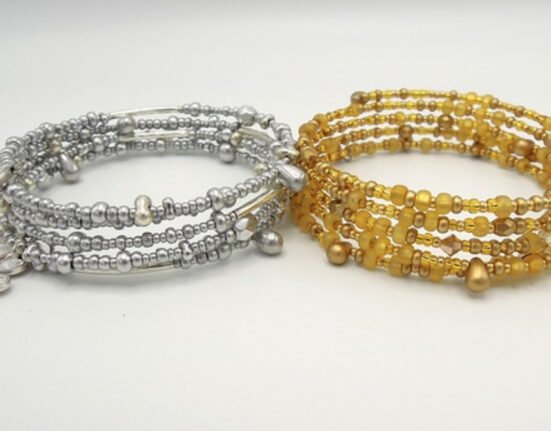The Delhi High Court has made it clear that even though similarity in two competing trademarks cannot be ascertained by dissecting and comparing their parts, the “dominant parts” of the trademarks can be compared.
A division bench of Justices Vibhu Bakhru and Sachin Datta observed,
“It is well settled that the question whether competing trademarks are similar cannot be decided by dissecting them and then comparing their parts for similarities. Having stated the above, it is necessary to note that the anti-dissection rule is not inconsistent with ascertaining whether the competing marks are similar by taking note of their dominant parts.”
The observation was made while dealing with US based casual and sports apparel brand Under Armour’s appeal alleging trademark infringement by an Indian company manufacturing clothes and footwear under the trademark ‘AERO ARMOUR’.
The Appellant alleged that the impugned mark is deceptively similar to its trademark ‘UNDER ARMOUR’ and other formative marks. It was the appellant’s contention that ‘ARMOUR’ is a dominant part of its trademark ‘UNDER ARMOUR’. Thus, the impugned marks are similar to its trademarks.
The Respondent on the other submitted that the appellant does not have any proprietary rights in respect of the word ‘ARMOUR’ and if the said word is deleted from the respective trademarks, there is no similarity between them. The word ‘UNDER’ and ‘AERO’ are neither phonetically nor visually similar.
While the single Judge had declined relief to Under Armour citing the Anti-Dissection Rule, the division bench held it is not impermissible to evaluate portions of the composite marks for the purposes of determination of overall similarities between the competing marks.
The Court held that the guiding principle would be that the exercise is for the purpose of determining the overall similarity of the competing marks and not the similarities between the components of the competing composite marks.
In other words, if the composite marks are dissimilar the fact that portions of the marks may be similar would be of a little relevance.
“A strong registered mark with a distinctive portion, may be infringed if a part of the later mark, which dominates the commercial impression of the said mark is identical to the distinctive portion of the earlier mark. It is thus essential to assess the strength of the senior mark and the part of the said mark makes it distinctive.”
In the present case, the High Court held that the word ‘ARMOUR’ is undoubtedly a significant part of the competing trademarks and thus, if it is found that much of the similarities between the competing marks stem from the word ‘ARMOUR’ being a part of the competing marks, the same cannot be disregarded.
“It would be erroneous to ignore the similarity of the overall commercial impressions of the competing marks, viewed as a whole, merely because the similarity may be attributable to the fact that parts of the competing marks are identical or lend similarity to the trademarks when viewed as a whole,” the Court held.
On analysing the two marks, the High Court found prima facie similarity in the overall structure of the word marks, where both marks are written in capital letters consisting of non hyphenated words. There is also phonetic similarity between the competing marks, considering that part of the rival word marks are identical, it said.
The Court also rejected Respondent’s contention that its apparel is distinctive as it carries a military theme. It held,
“The fact that the printed Tshirts manufactured and dealt with by the respondents bore taglines relating to valour, courage and bravery, which are associated with armed forces…did not affect the overall commercial impression of the impugned marks. The primary function of a trademark is that of a source identifier. The taglines and prints on the t-shirts were not used by the respondents as trademarks but merely as designs on tshirts. These prints are not the source identifiers of the products; the competing marks are.”
The Court also held that Under Armour was a strong trademark claimed since 1996 and the brand had garnered significant reputation and goodwill not just in India but globally.
“Prima facie, in the present case, the appellant’s trademark is a very strong mark, which has significant goodwill and therefore, it is necessary to extend a higher protection against competing marks, the use of which may have a propensity to take unfair advantage of the goodwill associated of the appellant’s trademark,” said the Court.
It also rejected the contention that price points of the two brands will tip-off the customer that the two brands are distinct.
“Whilst the goods manufactured by both parties may be priced differently and may have varied uses, the average consumer would encounter the appellant’s products using the mark ‘UNDER ARMOUR’ and other ‘ARMOUR’-formative marks alongside the respondents’ ‘AERO ARMOUR’ products within the same search bracket,” said the Court and restrained the respondent from using deceptively similar trademark till disposal of the main suit.
Appearance: For the Appellant : Ms. Swathi Sukumar, Sr. Adv. with Mr. S. Bansal, Mr. Rishi Bansal, Mr. Mankaran Singh, Mr. Kartik Malhotra, Mr. Rishabh Aggarwal & Mr. Ritik Raghuvanshi, Advocates. For the Respondent : Mr. J. Sai Deepak, Sr. Adv. with Mr. Samik Mukherjee, Mr. Manosij Mukherjee & Mr. Abhishek Avabhani, Advs
Case title: Under Armour Inc v. Anish Agarwal & Anr
Case no.: FAO(OS) (COMM)







